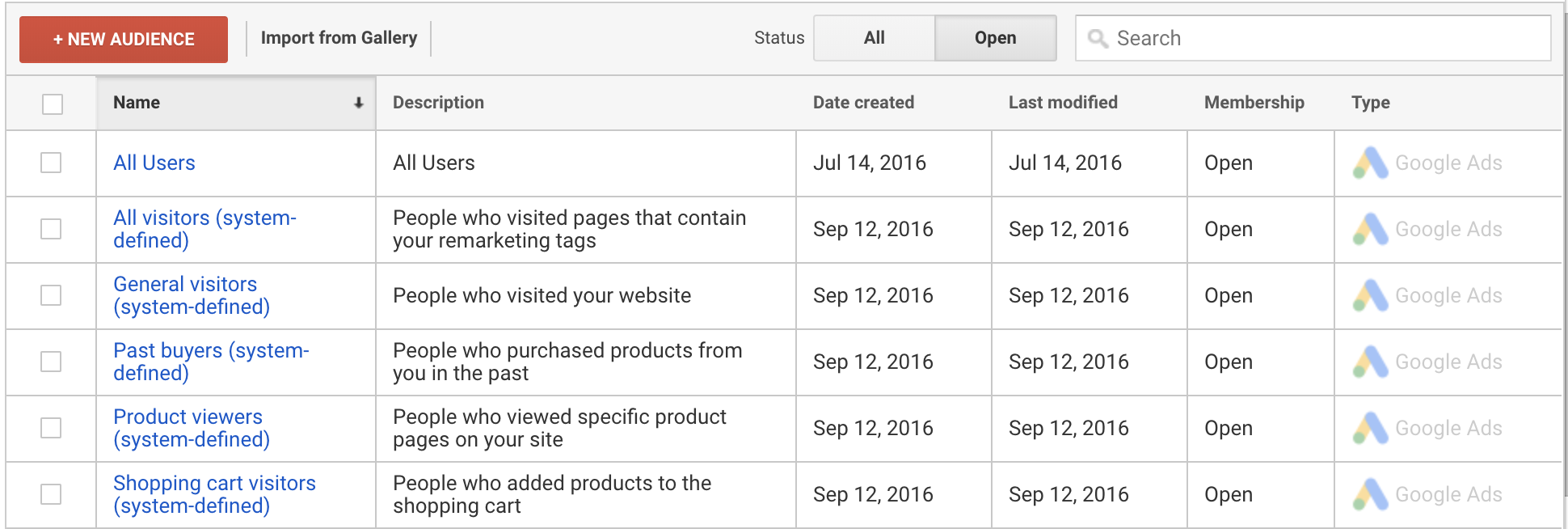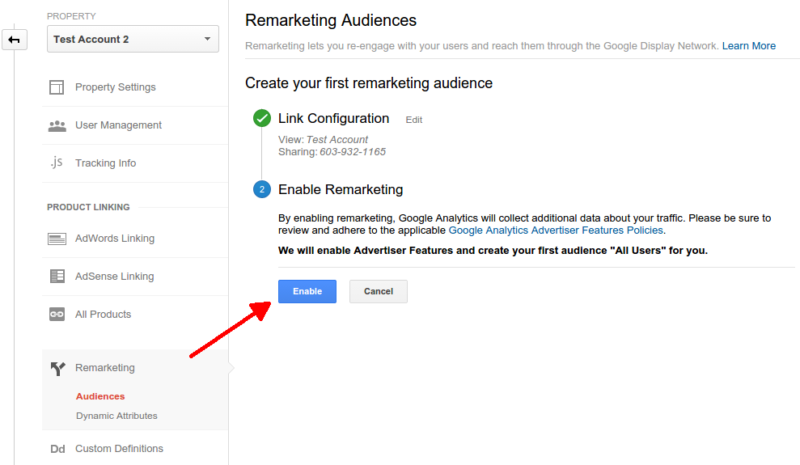Just How to Leverage Remarketing In Google Analytics for Your Organization
Just How to Leverage Remarketing In Google Analytics for Your Organization
Blog Article
Efficient Methods for Remarketing in Google Analytics
In the realm of digital marketing, the world of remarketing in Google Analytics stands as a pivotal tool for businesses intending to improve their online presence and conversion rates. With strategic target market division, customized remarketing listings, and engaging advertisement creatives, organizations can craft individualized campaigns that reverberate with their target market. Nonetheless, the true success depends on the capability to constantly improve and maximize these methods based on efficiency metrics and data understandings. By exploring the subtleties of vibrant remarketing and leveraging advanced tracking devices, organizations can unlock the full possibility of their remarketing initiatives, bring about boosted brand name visibility and client involvement.
Target Market Segmentation
Using target market segmentation is an essential strategy in enhancing the effectiveness of remarketing campaigns within Google Analytics. By separating your target market right into unique groups based on their actions, demographics, or passions, you can customize your marketing messages to be much more engaging and appropriate. This technique enables you to provide personalized advertisements to certain sections, increasing the chance of conversion.

Furthermore, audience segmentation helps you understand the differing demands and choices of various client teams, enabling you to craft more engaging ad creatives and offers. This targeted method not only boosts the performance of your remarketing efforts yet also boosts overall project performance.
Setting Up Remarketing Lists
To successfully apply remarketing approaches in Google Analytics, the preliminary step entails developing targeted remarketing listings based upon certain audience interactions. Setting up remarketing lists allows marketing experts to section their site visitors right into different groups based on their behavior, such as web pages checked out, items looked for, or actions tackled the website. By specifying these sectors, online marketers can after that create relevant and customized ads that target these particular teams, raising the possibility of conversion.
Remarketing checklists can be set up using different criteria such as page sees, duration of browse through, certain goal conclusions, and even particular occasions activated on the web site. This level of customization makes it possible for marketers to tailor their advertisements to match the passions and preferences of each fractional target market, causing higher involvement and conversion rates.
Furthermore, remarketing listings can also be developed based upon data imported from various other resources like CRM systems, permitting also more accurate targeting. By setting up these targeted remarketing lists, marketing experts can effectively connect to possible consumers that have already revealed rate of interest in their service or products, optimizing the effect of their remarketing projects.
Developing Engaging Ad Creatives
After segmenting website site visitors into targeted remarketing lists based upon certain target market interactions, the next essential step is to craft engaging advertisement creatives that resonate with each fractional team's choices and rate of interests. The performance of remarketing campaigns greatly counts on the ability of these advertisement creatives to record the focus of the target market and drive them to take the preferred activity.
To develop compelling advertisement creatives, it is vital to understand the unique characteristics of each fractional team (What Is “Remarketing” In Google Analytics?). Customizing the messaging, visuals, and offers to line up with the interests and choices of the target market can dramatically increase the opportunities of conversion. Using dynamic advertisements that instantly readjust material based on the individual's habits can likewise improve the customization of the advertisement experience

Monitoring Efficiency and Optimization
Effective tracking of campaign efficiency and consistent optimization are important facets of successful remarketing strategies in Google Analytics. To make sure the performance of remarketing projects, marketers need to routinely track crucial performance metrics such as click-through prices, conversion prices, and return on advertisement invest. By keeping track of these metrics, marketers can obtain useful insights right into the efficiency of their campaigns and recognize areas for enhancement.
In Google Analytics, marketing professionals her latest blog can leverage tools like conversion tracking and audience segmentation to evaluate the efficiency of their remarketing projects. Conversion monitoring allows online marketers to track certain activities that individuals take after clicking on a remarketing advertisement, offering valuable data on the performance of the project in driving wanted results. Target market division, on the other hand, enables marketing experts to split their target market into browse around this web-site different sectors based on numerous standards such as demographics, behavior, and rate of interests, enabling even more targeted and individualized remarketing initiatives.
Continuous optimization is vital for optimizing the effect of remarketing campaigns. Marketing experts need to utilize A/B testing to explore various advertisement creatives, messaging, and targeting techniques to recognize the most effective methods. By frequently examining project performance information and making data-driven optimizations, online marketers can make sure that their remarketing projects are achieving the wanted results and driving conversions properly.
Leveraging Dynamic Remarketing
Making use of dynamic remarketing can significantly enhance the importance and influence of targeted advertisements in Google Analytics. This advanced strategy allows advertisers to show customized advertisements to customers who have previously visited their web site or used their mobile application. By dynamically displaying services or products that the users have shown passion in, vibrant remarketing aids to maintain the brand name fresh in their minds and urges them to return to complete an acquisition.

Additionally, vibrant remarketing projects can be automated and optimized in real-time based on efficiency data, ensuring that the ads remain efficient and appropriate. By leveraging vibrant remarketing in Google Analytics, marketers can create extra impactful and targeted ad campaign that reverberate with their audience and drive outcomes.
Verdict
In final thought, effective remarketing approaches in Google Analytics include target market segmentation, targeted remarketing checklists, engaging advertisement creatives, performance monitoring, and dynamic remarketing. By concentrating on customized advertisements, information analysis, and continuous optimization, organizations can boost conversion rates and drive engagement efficiently. Leveraging tools like conversion monitoring makes sure that advertisements continue to be relevant and personalized, causing general success in remarketing initiatives.
Through tactical target market segmentation, customized remarketing lists, and appealing advertisement creatives, companies can craft tailored projects that resonate with their target audience. Utilizing dynamic advertisements that instantly change web content based on the individual's actions can additionally boost the customization of the ad experience.
Conversion monitoring enables marketing professionals to track particular activities that individuals take after clicking on a remarketing advertisement, providing useful information on the effectiveness of the project in driving preferred end results.Utilizing dynamic remarketing can considerably enhance the relevance and influence of targeted advertisements in Google Analytics - What Is “Remarketing” In Google Analytics?.In verdict, effective remarketing approaches in Google Analytics include audience division, targeted remarketing lists, compelling ad creatives, efficiency surveillance, and vibrant remarketing
Report this page